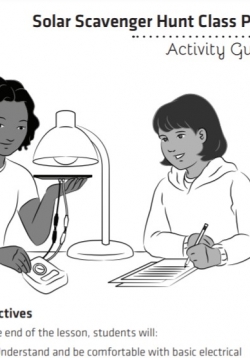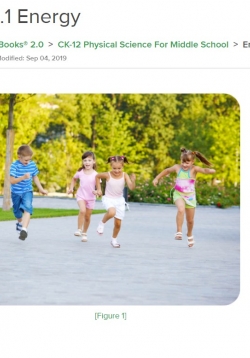
A series of 9 hands-on lessons (grades 2-12) that explore wind and solar energy, cirtcuity and electricity generation using a mixture of design and DIY tools. The includes materials lists and video support guides for implementing the curriculum.

A series of 9 hands-on lessons (grades 2-12) that explore wind and solar energy, cirtcuity and electricity generation using a mixture of design and DIY tools. The includes materials lists and video support guides for implementing the curriculum.

A time-tested series of 19 lessons developed by KidWInd to explore Wind Energy, using KidWind or DIY wind turbines designed by students. Lessons span from basic concepts of wind energy all the way through sighting of windmills and impacts on people and wildlife.

A series of over 150 digitial interacitves that allow students to explore a wide variety of science concepts, from simple energy transformations and motion, as well as beahvior of electricity in multiple contexts (static electricity, circuity, batteries, electromagnetism, fields, and more). Many include data collection and applied exploraion of science concepts in physics, chemistry, math, and more. Most are meant for secondary grades, but there are some good foundational energy interactives for upper elementary.

The Wonder of Science was created to support the next generation of science teachers. The website aggregates resources developed by Paul Andersen and other science teachers implementing the Next Generation Science Standards* (NGSS). Resources include phenomena resources by standard, graphic organizers, inquiry cards, NGSS posters, and other tools for building three-dimensionality in the classroom.
Through a series of solar panel and solar cell construction activities, students will learn the basic principles of energy conversion from light energy to chemical & electrical energy. Students will assemble and test pre-constructed solar panels to...
This unit involves students learning about transferring solar energy to small motors, exploring the center of gravity and testing light sources (including the sun). The culminating engineering design project gives students the chance to pull...
Throughout this creative, hands-on Unit, students are challenged to scale up every Disciplinary Core Idea and Science & Engineering Practice they’ve learned - from simple electricity generation, to building their own stereo speakers and DIY electric...
Through a series of learning experiences, students will experiment with the basic concepts of motion to electrical energy transformation. Students start by building a series of models that demonstrate the interactions between magnetic and electric fields....

cK-12 is a nonprofit free database of curricular resources across all subjects, and includes complete content, interacties and simulations, assessments and videos and more. The energy content includes content that addresses the foundational content required in NGSS.

Energy Literacy: Essential Principles and Fundamental Concepts for Energy Education is an interdisciplinary approach to teaching and learning about energy. The framework identifies seven Essential Principles and a set of Fundamental Concepts to support each principle. The guide does not seek to identify all areas of energy understanding, but rather to focus on those that are essential for all citizens K-Gray. It presents energy concepts that, if understood and applied, will help individuals and communities make informed energy decisions.
Bonneville Environmental Foundation
1500 SW 1st Avenue, Suite 710
Portland OR 97201
phone: 503-248-1905